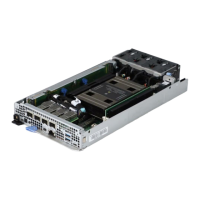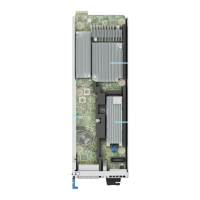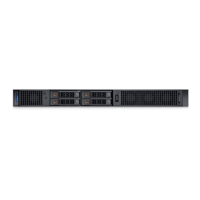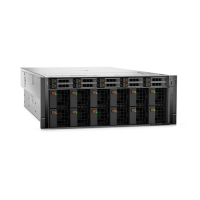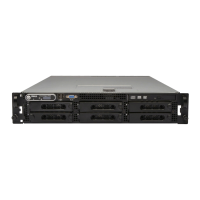Integrated Devices
To view the Integrated Devices screen, power on the system, press F2, and click System Setup Main Menu > System BIOS
> Integrated Devices.
Table 54. Integrated Devices details
Option Description
User Accessible USB Ports Configures the user accessible USB ports. Selecting All Ports Off disables all
USB ports. ; Selecting All Ports Off (Dynamic) disables all USB ports during
POST. Front ports can be enabled or disabled dynamically by authorized users
without resetting the system. This option is set to All Ports On by default.
The USB keyboard and mouse still function in certain USB ports during the
boot process, depending on the selection. After the boot process is complete,
the USB ports will be enabled or disabled as per the setting.
iDRAC Direct USB Port The iDRAC Direct USB port is managed by iDRAC exclusively with no host
visibility. This option is set to ON or OFF. When set to OFF, iDRAC does not
detect any USB devices that are installed in this managed port. This option is
set to On by default.
Embedded NIC1 and NIC2 Enables or disables the Embedded NIC1 and NIC2. If set to Disabled (OS),
the NIC may still be available for shared network access by the embedded
management controller. This option is set to Enabled by default.
I/OAT DMA Engine Enables or disables the I/O Acceleration Technology (I/OAT) option. I/OAT is
a set of DMA features designed to accelerate network traffic and lower CPU
utilization. Enable only if the hardware and software support the feature. This
option is set to Disabled by default.
Embedded Video Controller Enables or disables the use of the Embedded Video Controller as the primary
display. When set to Enabled, the Embedded Video Controller will be the
primary display even if add-in graphic cards are installed. When set to
Disabled, an add-in graphics card is used as the primary display. BIOS will
output displays to both the primary add-in video and the embedded video
during the POST and preboot environment. The embedded video will then be
disabled right before the operating system boots. This option is set to
Enabled
by default.
NOTE: When there are multiple add-in graphic cards that are installed in
the system, the first card that is discovered during PCI enumeration is
selected as the primary video. You might have to rearrange the cards in the
slots in order to control which card is the primary video.
I/O Snoop HoldOff Response Selects the number of cycles PCI I/O can withhold snoop requests from the
CPU, to allow time to complete its own write to LLC. This setting can help
improve performance on workloads where throughput and latency are critical.
The available option is 2K Cycles by default.
Current State of Embedded Video
Controller
Displays the current state of the embedded video controller. The Current
State of Embedded Video Controller option is a read-only field. If the
Embedded Video Controller is the only display capability in the system (that
is, no add-in graphics card is installed), then the Embedded Video Controller
is automatically used as the primary display even if the
Embedded Video
Controller setting is set to Disabled.
SR-IOV Global Enable Enables or disables the BIOS configuration of Single Root I/O Virtualization
(SR-IOV) devices. This option is set to Disabled by default.
OS Watchdog Timer If your system stops responding, this watchdog timer aids in the recovery
of your operating system. When this option is set to Enabled, the operating
system initializes the timer. When this option is set to Disabled (the default),
the timer does not have any effect on the system.
Empty Slot Unhide Enables or disables the root ports of all the empty slots that are accessible to
the BIOS and operating system. This option is set to Disabled by default.
Pre-operating system management applications 47
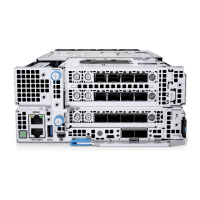
